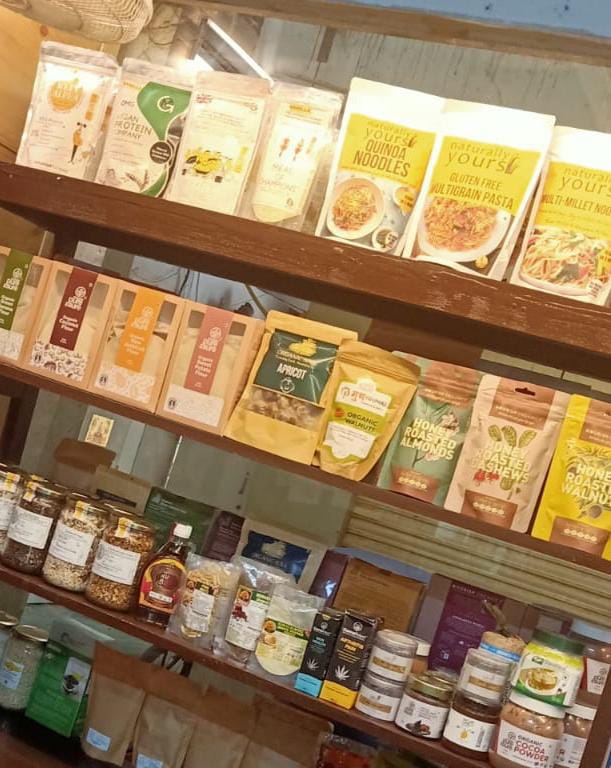What Strict Guidelines must be met to Sell Food as Organic?
The National Organic Program which is a part of USDA's Agricultural Marketing Service oversees and it enforces the integrity of the rigorous USDA organic standards as well as the accreditation of the organic certifiers.
However, organic is one of the most heavily regulated and closely monitored food systems in the World. And, the prescriptive regulations cover the growing, handling, and processing of organic fresh produce foods. By the way, any product which has been labeled as organic must be USDA certified. Buy organic and GMO-free food produces from Organic Vegetables Online.
However, U.S. organic standards require:
• The farms, handlers, and processors need to submit a detailed application that documents their operation, their processes, as well as their products. This entire application process is called an “Organic Systems Plan (OSP)”. And the purpose of this OSP is to help the inspectors and consumers trace organic products from the farm to the table.
• As we know healthy soil and balanced ecosystems are two basic foundations of organic farming. So, the organic operations must maintain or enhance the soil and water quality. In fact, they are also required to conserve wetlands, woodlands, and wildlife. This also must be documented in the ‘OSP’.
• In fact, the synthetic fertilizers, the sewage sludge, the irradiation, and the genetic engineering may not be used in the farming methods.
• The farmers require an establishment of buffers between the organic fields and the nearby conventional farms.
• They are allowed to make use of manure only and that too in accordance with strict guidelines.
• A 3-year transition period is required for the fields that have been farmed conventionally (However, during this 3 years of time period, the field must be farmed organically but the produces grown on this land may not be labeled as "organic" until the completion of this 3-year transition period).
• Thorough certification audits are required by third-party inspectors (both announced and unannounced). And these audits are done annually for every organic farm, handler, and processor for ensuring that the products labeled organic are grown, processed and handled as per the rigorous USDA organic standards.
• Organic food shouldn’t contain any artificial flavors, colors, or preservatives.
• All products which are bearing the organic label must also comply with the federal, state, FDA, and international food safety requirements.
What Substances Can be Used in Organic Production – The National List of Allowed and Prohibited Substances
In general, the synthetic substances are prohibited for the crop and livestock production. However, in some cases the some sort of synthetic substances are specifically allowed. Well, in those cases it can be used. Similarly, non-synthetic substances are allowed for crop and livestock production but if these substances are specifically prohibited in some cases, the farmers can’t use them.
However, the National List of Allowed and Prohibited Substances identifies the synthetic substances that may be used in some crops as well as the non-synthetic substances that are prohibited in organic crop and livestock production.
• For example, arsenic, strychnine and some other substances are natural materials but still they’re prohibited in organic production.
• But, the list of allowed synthetics for pest control is extremely limited.
This National List of allowed and prohibited substances also identifies a limited number of non-organic substances that may be used in the production of processed organic products.
• For example, salt is not cultivated organic and can’t be certified organic but it is used in many products.
But do you know every synthetic or non-organic material or ingredient on the National List is granted approval for only five years at a time and it is based on necessity and the absence of an organic alternative.
And, at the end of that five years, the material or the ingredient will automatically come off the list. However, a petition to keep it on that particular ingredient on top on the list can be submitted which is subjected to be approved by the National Organic Standards Board. Moreover, every petition is also subject to public comments and these public comments are a part of the NOSB review.
Hence, the USDA Organic regulations govern labeling along with production, processing and handling of organic food. So, the only foods that have been produced in accordance with the strict USDA Organic standards and which are certified by an accredited certification agency can only use the word organic or the USDA Organic Seal.
However, the use of USDA Organic Seal is voluntary, but it is widely used and it is also restricted as outlined below.
The following items may use the USDA Organic Seal:
• 100% Organic Label: The products which are labeled "100 percent organic" must contain all the organically produced ingredients only.
• Organic Label: The products which are labeled "organic" must consist of at least 95 percent organically produced ingredients. However, such produces can have 5% of ingredients which are not organic.
Following are some items which may not use the USDA Organic Seal:
• Made with Organic Ingredients: The processed products that contain at least 70 percent organic ingredients however can use the phrase "made with organic ingredients".
• Organic ingredients less than 70%: However the processed products that contain less than 70 percent organic ingredients are not allowed to use the term "organic”.
Although, the producers who sell less than $5,000 a year in organic foods are exempted from the organic certification procedure but they are also required to comply with the standards for using the term organic on food. However, without certification, they may not use the USDA organic seal. To buy 100% organic produces, explore the website of Organic Grocery Store.
Why Some Food Items Contain GMO Still Labeled as Organic Food?

Comments
Post a Comment